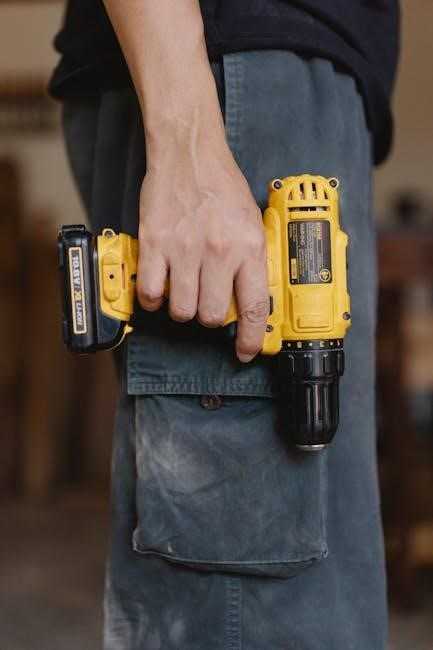
ansul r 102 manual
ANSUL R-102 Manual: A Comprehensive Guide
The ANSUL R-102 Restaurant Fire Suppression System manual serves as a vital resource. It is for individuals involved in the installation, operation, and maintenance. This comprehensive guide covers system components and safety. It also includes recharge and troubleshooting procedures for optimal fire protection.
Overview of the ANSUL R-102 Restaurant Fire Suppression System

The ANSUL R-102 restaurant fire suppression system is a pre-engineered, automatic solution. It’s designed to safeguard commercial kitchens from the risks of fire. As a wet chemical, cartridge-operated system, it provides regulated pressure and a fixed nozzle agent distribution network. This system is listed with Underwriters Laboratories.
Trusted for its rapid response capabilities, the R-102 is adaptable to the unique layouts of different kitchens. The system is designed for those who install, operate, recharge, or maintain these systems, this manual is essential. Specific sections will be relevant based on the user’s duties.
The R-102 system suppresses fires involving cooking oils and grease. It quickly cools the area to prevent reignition. Regular inspections, as outlined in the manual, are critical for maintaining system readiness. The manual details the system layout, including the agent storage tank and discharge nozzles. It also includes the manual pull station and gas valve for fuel shutoff. Changes to the system require consultation with a designer.
System Components and Layout
The ANSUL R-102 system comprises several key components working in harmony. These components ensure effective fire suppression in restaurant environments. The agent storage tank is at the heart of the system. It holds the wet chemical extinguishing agent. This agent is specifically formulated to combat grease and oil fires common in commercial kitchens.
Discharge nozzles are strategically positioned throughout the protected area. These nozzles deliver the extinguishing agent directly onto potential fire hazards. The layout includes a manual pull station. This station allows for manual activation of the system in case of emergency. A gas valve is integrated to shut off the fuel supply. This prevents further fuel to the fire.
Protected area discharge piping connects the storage tank to the discharge nozzles. This ensures proper distribution of the extinguishing agent. The system layout must be carefully designed. It should cover all potential fire hazards, such as cooking appliances and exhaust hoods. The system should be inspected monthly. It should ensure all components are unobstructed and in good working order.
Installation Instructions and Guidelines

Proper installation is crucial for the ANSUL R-102 system’s effectiveness. Adherence to the manual’s instructions is paramount. The manual is for installers to ensure optimal performance. Begin by carefully reviewing the system design and layout. This ensures all components are correctly positioned to protect potential fire hazards.
Mount the agent storage tank securely using the provided bracket. Follow the specified guidelines for tank placement. This placement depends on the system size. Install the discharge nozzles according to the layout. Ensure proper alignment and coverage of protected areas. Connect the discharge piping, ensuring all fittings are tight and leak-free.
Install the manual pull station in an accessible location. This allows for manual activation of the system. Integrate the mechanical gas valve into the fuel supply line. This ensures automatic shutoff upon system activation. After installation, thoroughly inspect the entire system. This should verify proper function of all components. Consult the manual for detailed diagrams and specifications.
Operation Procedures and Safety Precautions
Operating the ANSUL R-102 system requires understanding procedures and safety. This ensures swift, effective fire suppression. In the event of a fire, the system activates automatically. The fusible link melts, releasing the extinguishing agent. Alternatively, manually activate the system by pulling the manual pull station.
Evacuate the area immediately after system activation. This avoids exposure to the extinguishing agent. Contact the fire department and authorized ANSUL distributor. They will inspect and recharge the system. Never attempt to disable or tamper with the system. This could compromise its functionality. Ensure all personnel working near the system are trained. They should know the operation procedures and safety precautions.
Regularly inspect the manual pull station. Ensure it is unobstructed and ready for operation. Avoid using corrosive cleaning solutions near the system. This can damage components. Familiarize yourself with the agent’s Safety Data Sheet (SDS). It is important to understand potential hazards and first aid measures. Adhering to these guidelines maximizes safety and system reliability.
Maintenance and Inspection Schedule
Maintaining the ANSUL R-102 system’s reliability requires a structured maintenance and inspection schedule. Regular checks identify potential issues. This ensures the system functions optimally during a fire emergency. A monthly self-inspection is crucial. It includes verifying the manual pull station is unobstructed. Confirm that it hasn’t been tampered with.
Inspect the nozzles for cleanliness and proper orientation. Ensure the extinguishing agent tank is at the correct pressure. Check the system for any visible damage or corrosion. A more comprehensive inspection should occur semi-annually by a qualified technician. This includes testing the system’s functionality. It also involves checking the fusible links and conducting a thorough component assessment.
Annual maintenance performed by a certified ANSUL technician is essential. They will conduct a hydrostatic test. This will confirm tank integrity. They will also recharge the system and replace any worn or damaged parts. Maintain detailed records of all inspections. Note any maintenance performed. This history helps track system performance. It also ensures compliance with safety regulations.
Recharge Procedures and Guidelines
Following a fire incident or system discharge, proper recharge procedures are vital. They restore the ANSUL R-102 system to full operational status. Only trained and certified ANSUL technicians should perform recharge services. This ensures safety and compliance with regulations. Before starting, inspect all components. Assess any damage that occurred during the discharge.
Replace any damaged parts with genuine ANSUL replacement components. Follow the manufacturer’s guidelines for the specific system model. Proper personal protective equipment (PPE) is essential during the recharge process. This protects technicians from exposure to chemicals. Ensure the area is well-ventilated. Carefully handle the extinguishing agent.
Fill the tanks according to the instructions in the manual. Precise measurements ensure optimal performance. After refilling, leak-test all connections. Verify the system is properly pressurized. Document all recharge activities. This includes the date, technician’s name, and amount of agent used. Proper recharge guarantees the system is ready for future fire events.
Troubleshooting Common Issues
The ANSUL R-102 system, while reliable, may encounter issues requiring troubleshooting. Addressing problems promptly is essential for system functionality. One common issue involves the manual pull station. Ensure it’s unobstructed and hasn’t been tampered with. Verify it is ready for operation.
Nozzle blockages can impede agent discharge. Regularly inspect and clean nozzles to prevent obstructions. Check for any corrosion or damage. Low pressure in the agent storage tank could indicate a leak. Inspect connections and fittings for tightness. Verify the tank is filled to the correct level.

If the system fails to actuate during a fire, check the fusible links. Make sure they are intact and properly positioned. Also, examine the releasing unit for mechanical issues. Consult the manual for detailed diagrams and troubleshooting steps. If problems persist, contact an authorized ANSUL distributor. Do this for professional assistance. Proper maintenance minimizes the chance of common issues arising.
Mechanical Gas Valve Installation
Installing the mechanical gas valve correctly is crucial for the ANSUL R-102 system’s proper function. This process ensures fuel shutoff during fire suppression. Begin by consulting the system design plans. This is to determine the correct valve placement. Ensure the gas supply is turned off before starting the installation.
Securely mount the valve using appropriate fittings and hardware. Refer to the manufacturer’s instructions for torque specifications. This will prevent leaks. Connect the 1/8-inch copper tubing from the air cylinder to the valve. Make sure that all connections are tight and free from damage.
Test the valve’s operation after installation. Simulate a fire event to confirm the gas supply shuts off. Address any leaks or malfunctions immediately. Regular inspections are essential. It ensures the gas valve operates effectively. Consult the ANSUL R-102 manual for detailed diagrams and guidelines. Seek assistance from qualified technicians for complex installations.

Design and Planning Considerations
Effective design and planning are paramount when implementing the ANSUL R-102 system. These considerations ensure optimal fire suppression. The first step involves assessing the kitchen layout. Identify potential fire hazards like cooking equipment and grease accumulation areas. Determine the appropriate number and placement of nozzles. This is for comprehensive coverage.
Account for equipment mobility. This ensures the system adapts to changes. Select the correct tank size to meet the specific demands. Consider the kitchen’s ventilation system. This ensures the suppression agent is not dispersed prematurely. Comply with local fire codes and regulations throughout the design process.
Collaborate with certified ANSUL technicians for expert guidance. Their experience is invaluable for navigating complex design challenges. Document all design specifications, including nozzle locations and piping routes. This ensures clarity for installation and maintenance. Regular reviews and updates are essential to maintain effective fire protection. The ANSUL R-102 manual offers detailed guidance on design best practices.
Case Studies and Applications
The ANSUL R-102 Restaurant Fire Suppression System has demonstrated its effectiveness in various real-world scenarios. Examining case studies provides valuable insights into its capabilities. One such case involves the Professional Chefs Academy in Istanbul. The R-102 system was installed to protect their commercial kitchen.
The system quickly suppressed a grease fire, minimizing damage and downtime. Another case study highlights a restaurant in Portuguese-Brazil. The R-102 system prevented a small fire from escalating into a major disaster. These examples showcase the system’s reliability in diverse culinary environments.
The ANSUL R-102 is widely applied in restaurants, food trucks, and institutional kitchens. Its adaptability makes it suitable for various cooking equipment layouts. It is effectively used in high-volume frying, grilling, and wok stations. Case studies demonstrate its ability to safeguard personnel and assets. They also ensure business continuity. The system’s pre-engineered design simplifies installation and reduces costs. Its proven track record makes it a trusted choice for fire protection.